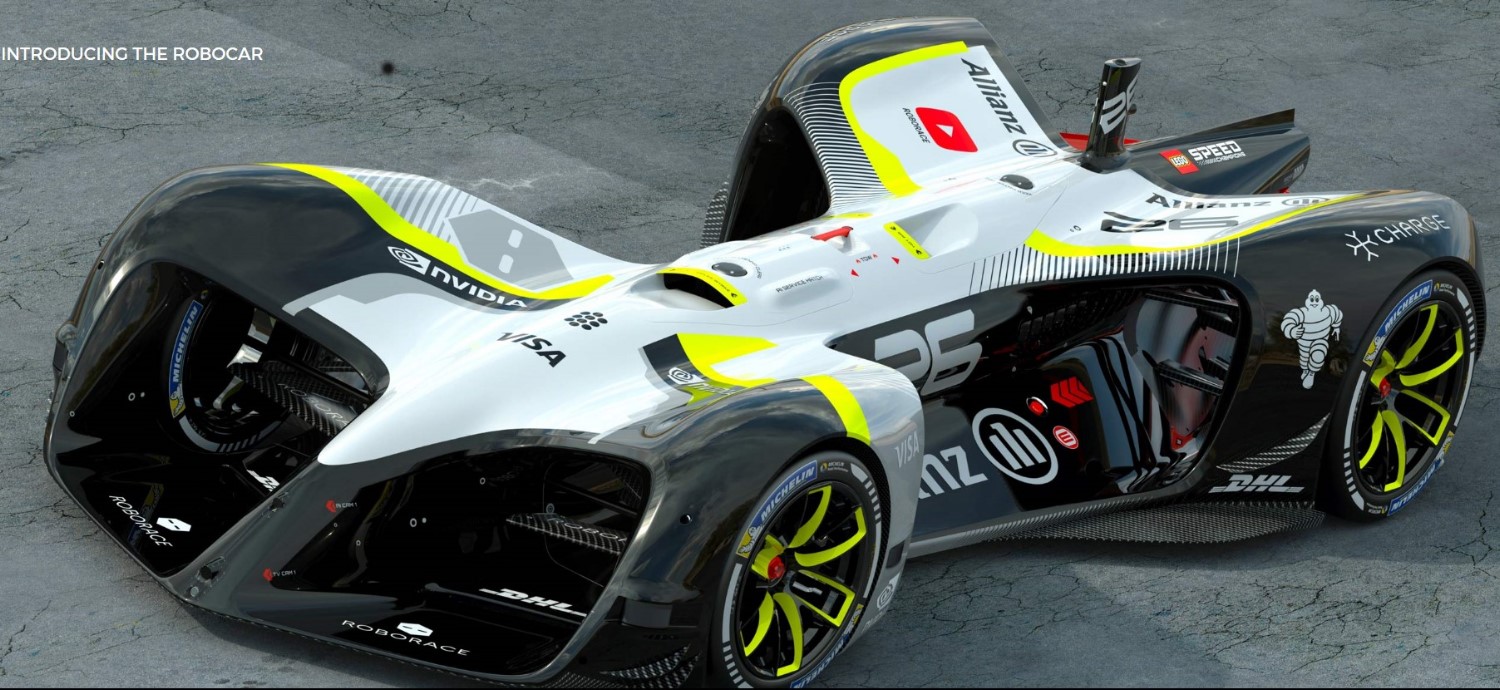Roborace unwraps its driverless 2nd-gen electric car
 |
| The latest Robocar – for the series out to make drivers obsolete |
The team behind Roborace has taken a big step toward introducing a fully driverless racing competition. At a press conference in Barcelona, chief executive Denis Sverdlov and chief designer Daniel Simon revealed the final design for its track-ready "Robocar." We've seen images of the vehicle before, but they were merely renders; a hint of what the company was working on. The unveiling of a real car, all curves and carbon fiber, is our best evidence yet that the futuristic motorsport will actually happen.
The complete Robocar measures 4.5 meters long and 2 meters wide, considerably larger than a Formula 1 racer. Inside the central spine is a 540kW battery and four 300kW motors, which the team claims can push the car up to 320KPH (roughly 199MPH). To navigate the track and competitors, a whole cacophony of sensors are required, including two radars, five LIDARs (the laser-based equivalent of radar), 18 ultrasonic sensors, two optical speed sensors and six AI-driven cameras. All of that data is fed into a "brain," developed by NVIDIA, which draws on the team's custom algorithms.
The car's sleek, futuristic look is no coincidence. As a concept designer, Simon has worked on science fiction movies including Tron: Legacy, Oblivion and Captain America: The First Avenger. He started his career at Volkswagen in 1999, assisting with the Bugatti reboot in 2001 before moving into a consultant role in 2005. He made his mark on motorsport in 2011, helping the Hispania Formula 1 team design its F111 racer.
 |
| Robocar |
"Whilst pushing the boundaries of engineering, we styled every single part of the Robocar," Simon said. "We take special pride in revealing a functional machine that stays true to the initial concept, a rarity in automotive design and a testament of our determination. It's a great feeling to set this free."
Roborace's progress has been slow, but steady. The team has been working with Averner Films on a documentary series, posted to its YouTube channel, that provides regular updates on the project. To date, these have focused mostly on the team's "DevBot" prototypes, which allow a driver to sit inside. The cockpit design is important because, just like conventional driverless systems, it allows an operator to take back control should something go wrong. Earlier this month, the team pitted two DevBots against one another in Buenos Aires. The test was mostly a success, although one hit a wall while "pushing the boundaries of AI."
The team hasn't said exactly when the final car will be tested on a race track. Instead, it's promising further DevBot demonstrations, including another head-to-head later this year. A full, proper Roborace seems a long way off, but at least we know what the competing cars will look like now. engadget
